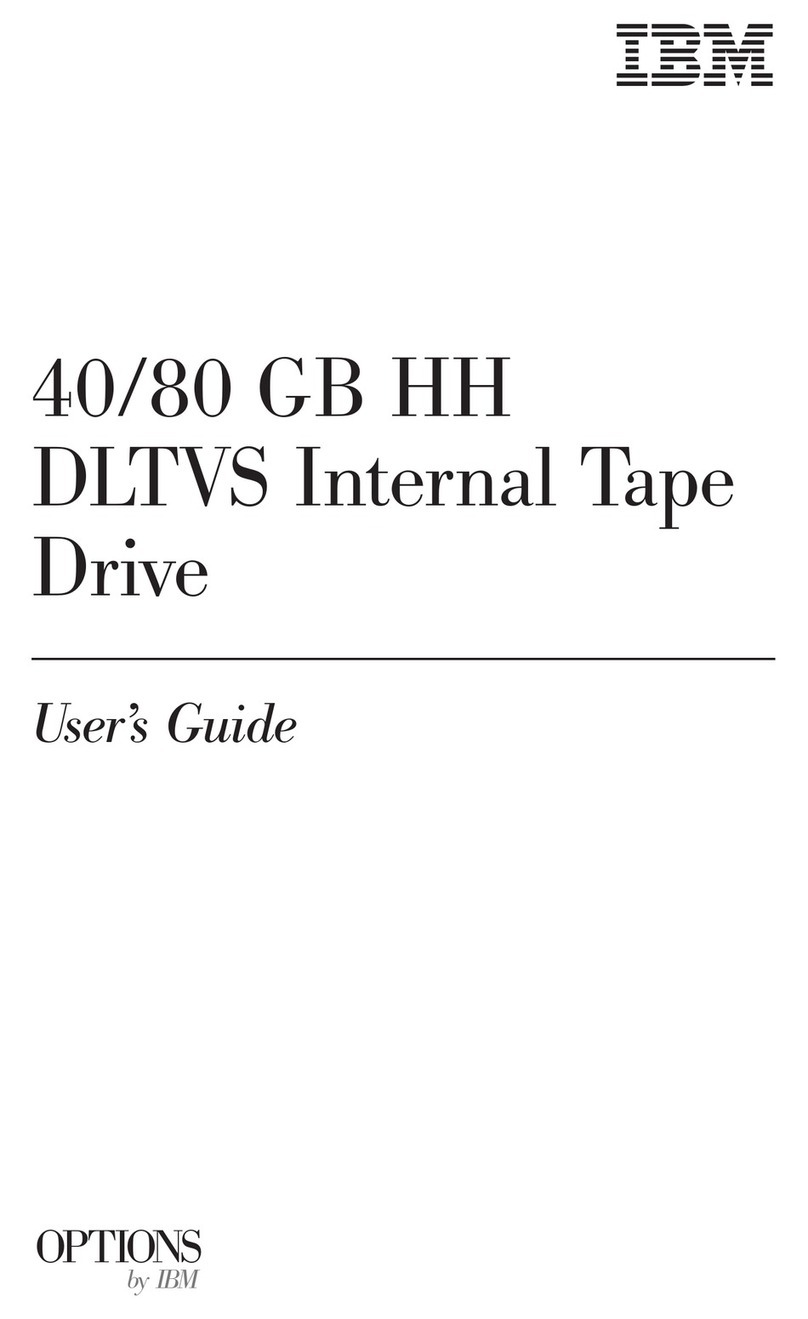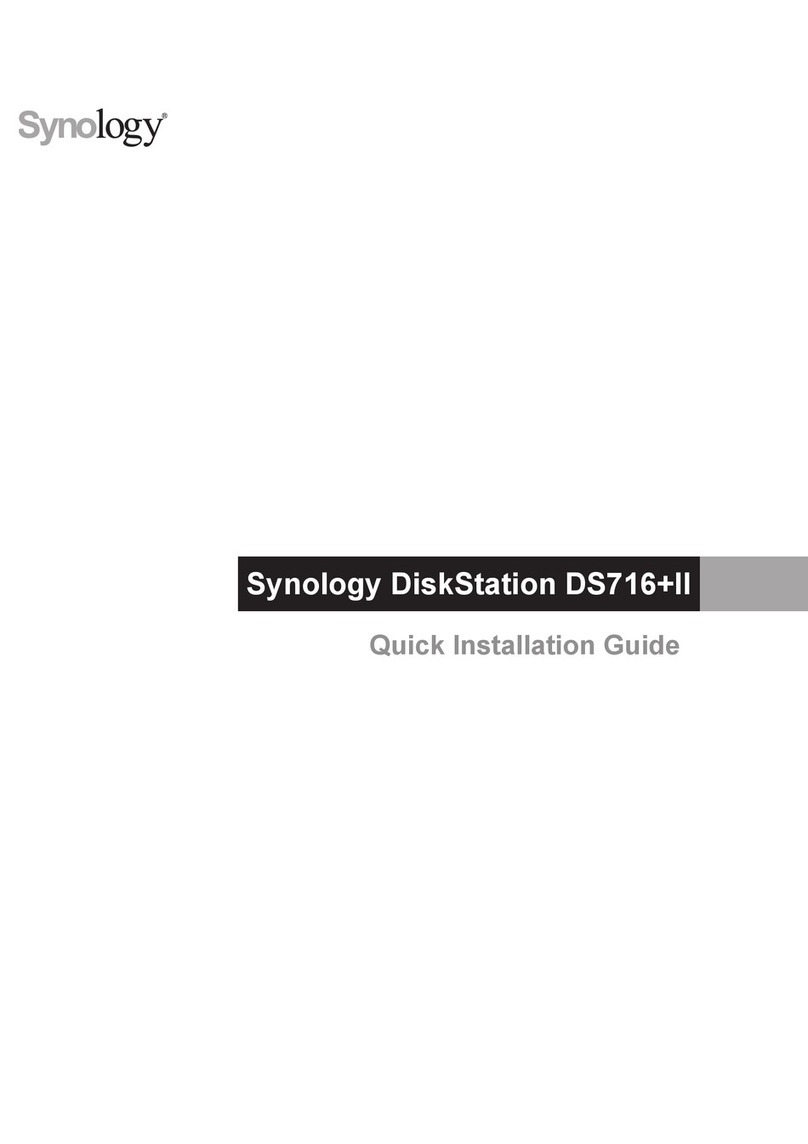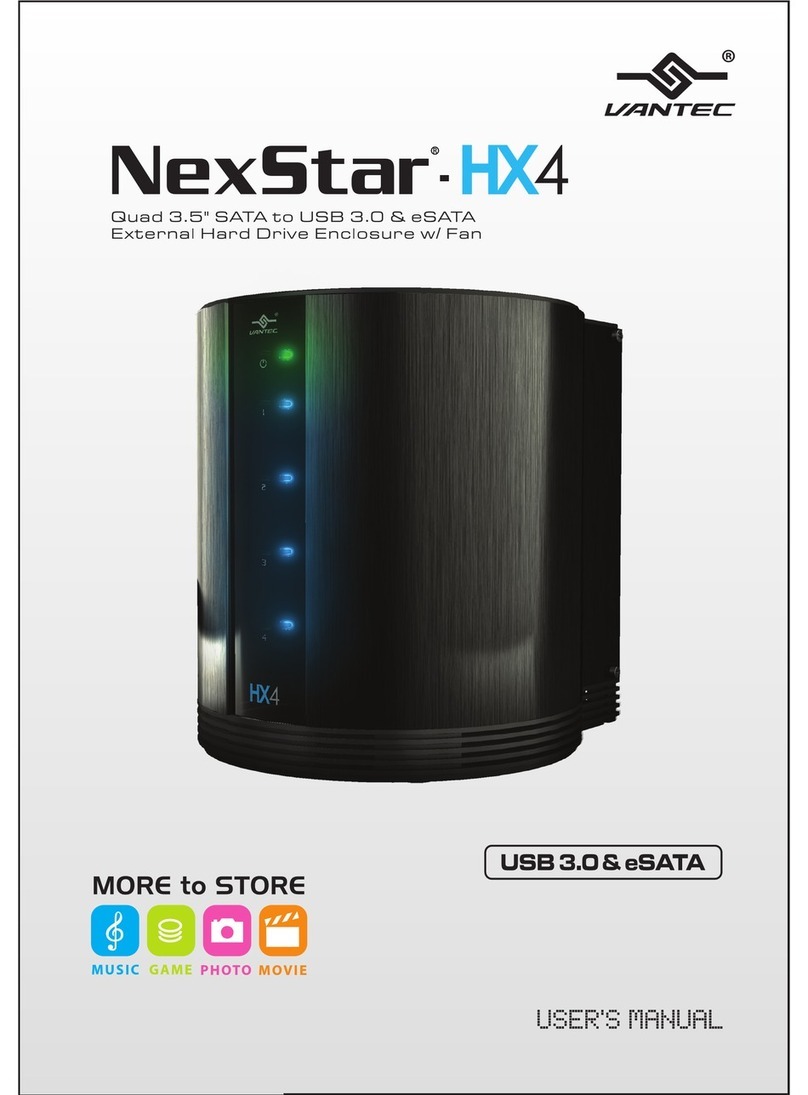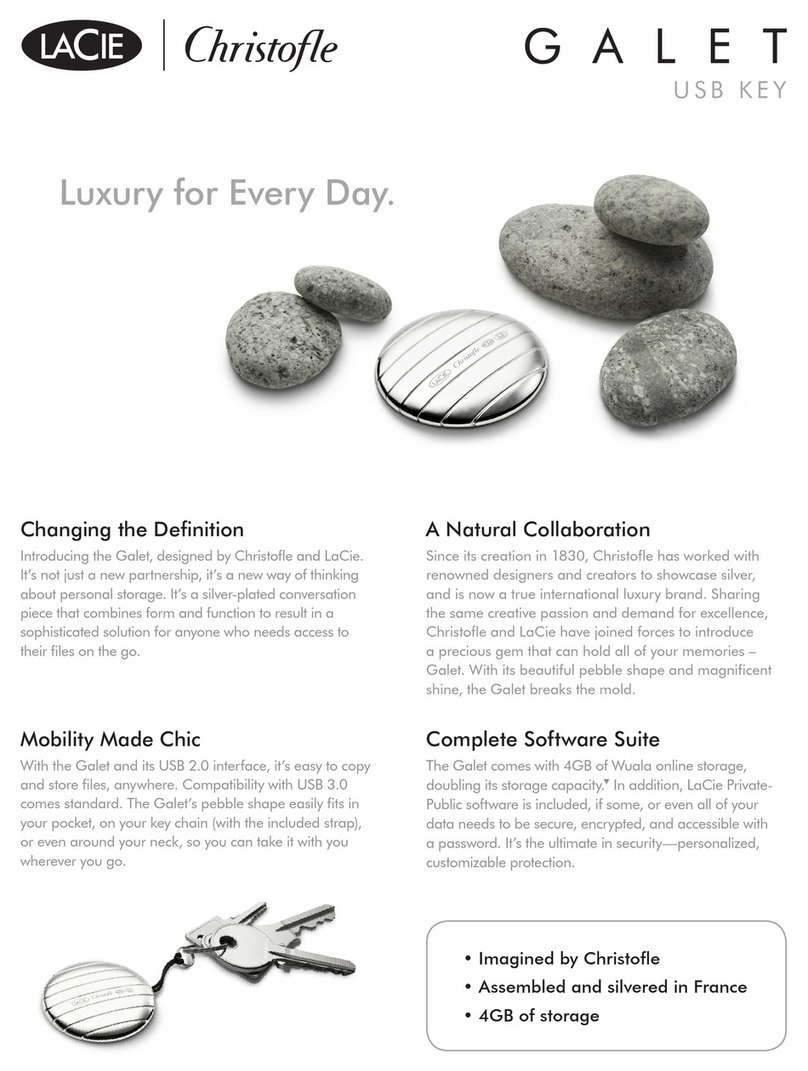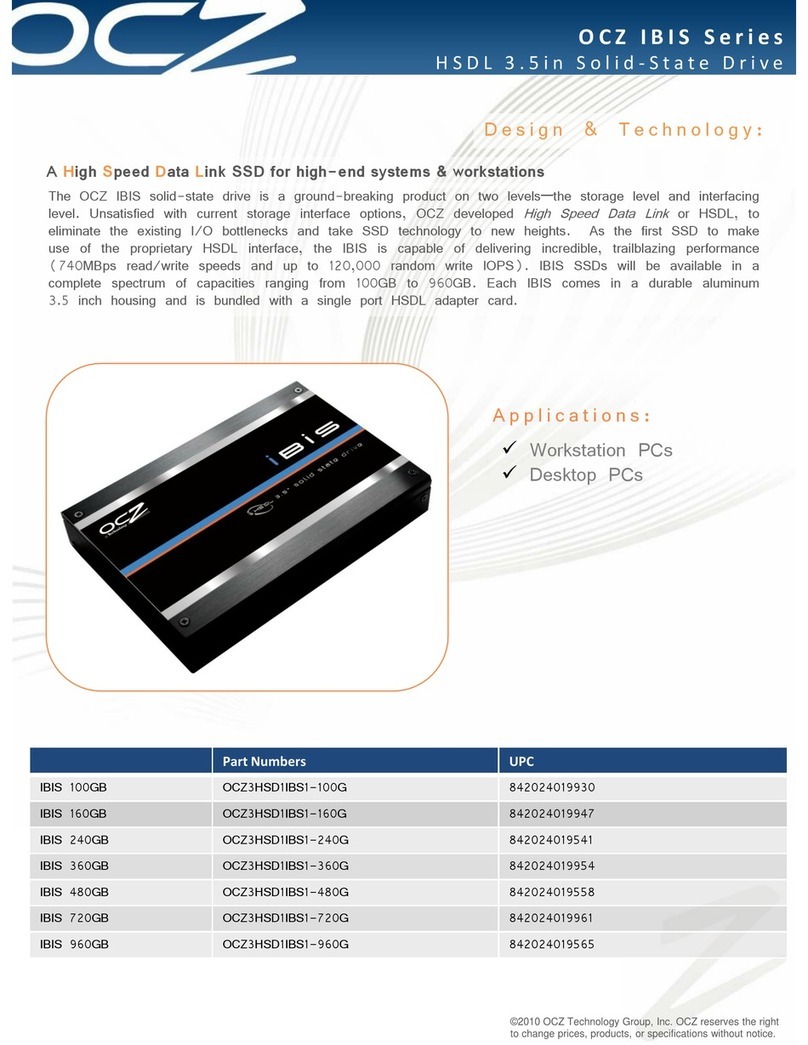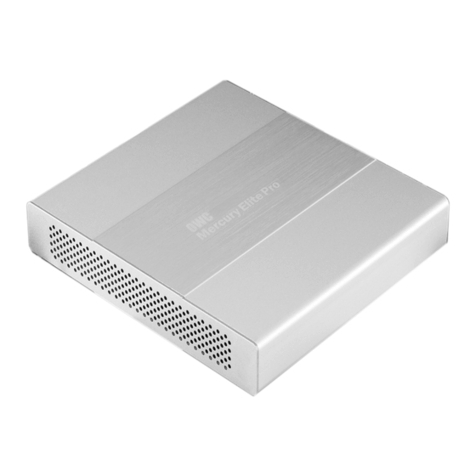ARRAID AEM-8 User manual

AEM-8
USER MANUAL
--------------------------------------------------------------------------------------------------------------------------------------------
Revision E (updated 11/01/22)
--------------------------------------------------------------------------------------------------------------------------------------------
End-User Document Reference Number: _____________________________________

AEM-8 User Manual Revision E (11/01/22)
1
AEM-8 User Guide
HP-IB Disk Drive Replacement System
Technical Note: The original AEM-8 had internal SCSI peripherals. Internal SCSI
peripherals were discontinued by Arraid in 2019. The current AEM-8 uses only solid-state
internal peripherals. This updated manual deals only with solid-state AEM-8 devices.
AEM-8 Overview
The Arraid AEM-8 is a direct replacement for Hewlett Packard disk storage systems that adhere to
the HP-IB interface standard (IEEE-488) and utilize the CS/80 command set. The AEM-8 emulates
the following HP-IB devices:
C2200, C2202, C2203, 7906, 7907, 7908, 7911, 7912, 7914, 7920, 7925, 7933, 7935, 7936, 7937,
7941, 7942, 7945, 7946, 7957, 7958, 7959, 7961, 7962, 7963, 9144, 9145
The HP-IB devices listed in RED are directly selectable from the AEM-8 control panel. The HP-IB
devices in BLACK have been reported to work by our client base. These are included for
information purposes only. Arraid cannot independently verify these reports.
The Arraid AEM-8 is also a direct replacement for Bering Technology storage systems that emulate
the HP-IB interface standard (IEEE-488), and the CS/80 command set. The Arraid AEM-8 can
replace the following Bering devices:
OptiPac, EconoPac, 6012458-008, 8032AF, 6012458-005, 8631AF, 6012458-002, 8602, 8502, and
many others.
The Arraid AEM-8 can replace most every type of Bering storage device ever manufactured.
(NOTE: Bering Technology has now ceased manufacturing and repair operations.)
The AEM-8 is a plug & play replacement for any HP or Bering drive model listed above. Each
AEM-8 has an internal Single Board Computer (SBC) that emulates the electronic and physical
characteristics of the original HP devices. The SBC acts as a bridge, converting HP-IB protocol into
industry standard SCSI protocol, which is again converted to run current technology solid-state
devices. The media used in current model AEM-8 devices is industrial quality Single Layer Cell
(SLC) Compact Flash (CF) cards.
The basic AEM-8 configuration consists of a 19” rack-mount chassis with a front control panel, one
or two internal peripherals, a PSU, and the SBC. The internal peripherals can be programmed to
behave as one or two disk drives, or as one disk drive & one MO/Tape drive (for backup), or as a
single MO/Tape drive.
Some models of the AEM-8 offer features not available with the original drives. These features
include offline backup & restore, multi-volume support (multiple disk images on a single CF card),
and removable CF media.

AEM-8 User Manual Revision E (11/01/22)
2
AEM-8 Installation
Installing the Arraid AEM-8 is a simple task, requiring no special tools and a basic knowledge of
computer technology. The existing HP data/control cable plugs directly into a rear connector on the
AEM-8 enclosure. No host-system software changes are required. Data is copied from the original
drives to the AEM-8, using HP copy utilities.
The installation of an AEM-8 should take about one hour. The time required to initialize the AEM-8
and load the operating system and the application software, is similar to installing a new HP or
Bering disk drive.
Prior to installing the AEM-8, the end-user should make a backup of the host system, using normal
backup utilities and practices.
The end-user should retain the original Arraid shipping container and packing material, in case the
AEM-8 needs to be returned to Arraid for warranty or repair work.
The AEM-8 cannot accept any of the original HP media, whether cartridge tape, removable platter,
or removable disk pack. Transfer of information from the existing HP or Bering devices to the
AEM-8 will require a disk-to-disk copy or a restore from reel-to-reel tape. Customers with single
disk configurations and no other backup device should familiarize themselves with operating system
procedures for adding a new disk drive.
The Arraid AEM-8 is manufactured in a 19” rack mount chassis for easy installation into a standard
RETMA electronics cabinet. Additional bracket support inside the RETMA cabinet may be
required, depending on the strength of the existing brackets, and there being proper support for the
data/control cables.
Installation Procedure: (1.) Verify that the AEM-8 power supply unit (PSU) is set to the proper
line voltage for the operating environment. (2.) Securely mount the chassis. (3.) Connect AC
power. (4.) Connect the data/control cable. (5.) Turn on the rear power switch. (6.) Turn on the
front power switch. (7.) Observe successful completion of the internal self-test on startup.
Installation Notes: (1.) The AEM-8 comes with a standard USA power cord. The end-user is
responsible for providing any alternate power cord or AC adapter necessary to make the AEM-8
compatible with the local power source. (2.) The data/control cable from the host HP computer
must have adequate support at the rear of the AEM-8. An improperly supported data/control cable
can result in intermittent data integrity issues.
AEM-8 Control Panel
The figure on the next page depicts the layout of the Arraid AEM-8 control panel. The control panel
consists of a 2-line LCD text display, four LEDs, and four pushbuttons. The control panel is used to
display system information and configuration/operation menus. To access the control panel menus,
press the UP/INCREMENT or DOWN/DECREMENT buttons. This scrolls through the menu
options. To select an option, press the ENTER button. To cancel a selection, press the
BACK/CANCEL button.
The four LED lights on the AEM-8 control panel were never fully implemented for the AEM-8.
These lights were added to support options/functions that are currently not used by the AEM-8.
These lights indicate disk I/O activity, but beyond that, they provide no important information to the
end-user.

AEM-8 User Manual Revision E (11/01/22)
3
Arraid AEM-8 Control Panel
AEM-8 Control Panel (continued)
The following control panel menu selections may be required for normal operation and are the same
regardless of the HP drive being emulated:
Set Drive Type - The Set Drive Type menu allows the end-user to select the specific HP drive
model to be emulated. Selecting a new drive type reconfigures the AEM-8’s disk parameters and
volume size, to match the selected HP drive. The current AEM-8 drive type is displayed on the
AEM-8’s control panel during normal operation. Setting the drive type is usually only required once,
at installation time.
To change the drive type, press the UP or DOWN button to display:
Set Drive Type
…then press ENTER. The control panel will display:
Drive Type ####
…where #### is the HP Model number currently being emulated. Pressing the UP or DOWN
button changes the ####, cycling through the supported HP drive models. Press the ENTER
button once the desired drive type is displayed. The activity indictor will become active (green),
indicating that the AEM-8 is busy storing the new model number to non-volatile memory, changing
AEM-8 parameters, and loading a disk image to memory. Once the control panel’s activity indictor
turns off, the AEM-8 is ready for host access.
Set Address - The Set Address Menu is used to specify the HP-IB device address of the AEM-8.
The default address is 0, but using the Set Address menu, any address from 0 to 7 can be selected.
To check or change the address, press the UP or DOWN button to display:
Set Address
…then press ENTER. The control panel will display:
Address = #
…where # is the current address. Pressing the UP or DOWN button changes the address displayed.
Press the ENTER button once the desired address is displayed. The Activity indictor will become
active (green), indicating that the unit is busy storing the new address to non-volatile memory.

AEM-8 User Manual Revision E (11/01/22)
4
AEM-8 Control Panel (continued)
Select Volume - The control panel Select Volume menu allows the user to set the active volume of
the primary drive. The AEM-8 ships from Arraid with volume 0 of the primary drive set as the
active volume.
Unload Media – The Unload Media selection has no real function now that we are using solid-state
internal peripherals. A CF module can only be removed by pushing the manual eject button to the
immediate right of the CF module slot. Please caution that a CF module should not be ejected or
installed while the AEM-8 is in an operational (read/write) mode.
System Info - The System Info menu provides information on the AEM-8’s firmware revision level
and FPGA checksum. The firmware for the AEM-8 is locked and will not be changed or updated.
Normal Operation
After power is turned on, the control panel momentarily displays the text:
HPIB Emulation
Arraid LLC
…while it goes through power on self-test. It then displays:
#### V:0 V:0
Arraid LLC
…where #### is the HP model number of the drive being emulated, and V:0 is the selected volume
number. This text message is displayed when the control panel is not in use for advanced
operations. This indicates that the Arraid AEM-8 is functioning properly, is on-line, and ready for
host access.
The HP model number initially displayed is the one assigned at the factory and should match the
model specified in your order.
Initialization - The AEM-8 is installed and powered on, the proper drive type selected, the HP-IB
address is set, and Volume 0 of the primary drive selected. Now you can load data onto the drive.
The AEM-8 does not require HP low level formatting. So, the first step is to ensure that the host
operating system sees that the drive is present and then can perform an operating system format.
The process is the same as when you install a new HP or Bering drive. Transferring data requires
operating system utilities to perform a disk-to-disk copy, or a restore from tape.
During normal operation, while the operating system and application software are accessing the
AEM-8, the activity light will be lit. Any time that stored information is changed, the red activity
light on the appropriate drive bay will also be lit. Once the copy or restore process is finished,
installation is complete, and the AEM is ready for use.

AEM-8 User Manual Revision E (11/01/22)
5
Multi-Volume Option
The Multi-Volume option can provide a degree of flexibility and ease of use that was impossible
with the original HP disk drives. Multi-Volume allows the end-user to change the storage area that
is visible to the host system. The operator may store several HP disk images onto a single AEM-8
internal drive, and then select which image is made available to the host computer, upon restart.
Multi-Volume functions by sectioning the available storage space on an AEM-8 internal drive CF
into smaller sections. These sections are called volumes. The number of volumes available is
dependent on the HP drive type and the capacity of the internal peripheral’s CF card. Only one
volume, called the active volume, is accessible by the HP host system at any one time.
Multiple Volumes on an AEM-8 Drive
Active Volume
The active volume can be accessed by the HP host without affecting or corrupting other the volumes,
making it possible to have multiple operating systems, file sets, or backup images stored on a single
AEM-8 internal drive.
Control panel backup & restore operations can be performed on the active volume. The active
volume number on an AEM-8 can be changed using the control panel’s Set Volume menu.
Changing the active volume takes effect immediately, sending disk activity to the new volume.
The control panel’s volume copy menu can be used to quickly duplicate or backup a volume.
1
GB CF
as
Disk
Drive
Volume 0 - 7914 135MB
Volume 1 - 7914 135MB
Volume 2 - 7914 135MB
Volume 3 - 7914 135MB
Volume 4 - 7914 135MB
Volume 5 - 7914 135MB
Volume 6 - 7914 135MB
Volume 7 - 7914 135MB

AEM-8 User Manual Revision E (11/01/22)
6
Additional Operational Notes
The following paragraphs provide a description of the control panel menus that apply to AEM-8
devices that are to replace a combination Disk/Tape drive combo, HP or Bering models. In this
system configuration, the primary drive is at Unit 0 and the secondary drive at Unit 1.
Select Volume - The control panel Select Volume menu allows the user to set the active volume of
the primary drive. To change the active volume, press the UP or DOWN button to display:
Select Volume
…and press ENTER. The control panel will display:
Set Volume to #
…where # is the current active volume. Pressing the UP or DOWN button changes the volume
number displayed. Press the ENTER button once the desired volume number is displayed. The
activity indictor will become active (green), indicating that the unit is busy storing the new active
volume number to non-volatile memory. Once the control panel’s activity indictor turns off, the
AEM-8 is ready for host access, or it can accept additional commands.
Backup - The Backup feature performs a backup of the AEM-8’s primary drive, saving the data to
the secondary drive, without the use of the host-system. Instead, the Arraid AEM-8’s internal SBC
initiates and manages the data transfer.
During a backup operation, data is copied from the primary drive to the secondary drive. When an
AEM-8 is configured with the secondary drive setup as MO/Tape emulator, the secondary drive uses
a special tape format. When using this tape format, the secondary drive can contain only one backup
image. Successive backup operations overwrite any existing data on the secondary drive.
Flow of Data During a Backup Operation
Backup
Backup
To perform a Backup, insert a blank CF module and press the UP or DOWN button to display:
Backup
…and press ENTER. The control panel will display:
Perform
Backup (Y/N)
…asking for confirmation. Use the UP/DOWN keys to select “Y” for yes or “N” to cancel. To
initiate a backup, press the ENTER key after selecting “Y”. The Activity indictor will become
active (green), indicating that the unit is busy. The control panel will display:
Backup
Please Wait
After a backup operation is complete, the control panel’s activity indictor turns off, the display
returns to normal, and the AEM-8 is ready for host access, or it can accept additional commands.
Secondary Drive
Primary Drive
Control Panel

AEM-8 User Manual Revision E (11/01/22)
7
Additional Operational Notes (continued)
Restore -The Restore feature restores a backup image that was created using the Backup operation,
from the secondary drive, back to the primary drive, on the AEM-8. The AEM-8 performs the
restore independent of the host-system.
Flow of Data During a Restore Operation
Restore
To perform a Restore, insert a previously recorded CF module into the secondary drive, then press
the UP or DOWN button to display:
Restore
…and press ENTER. The control panel will display:
Perform
Restore (Y/N)
…asking for confirmation. Use the UP/DOWN keys to select “Y” for yes or “N” to cancel. To
initiate a restore, press the ENTER key after selecting “Y”. The Activity indictor will become active
(green), indicating that the unit is busy. The control panel will display:
Restore
Please Wait
After a restore operation is complete, the control panel’s activity indictor turns off and the AEM-8 is
ready for host access, or it can accept additional commands.
Volume Copy - The Volume Copy feature copies a volume on a drive to another volume. To
perform a volume copy, press the UP or DOWN button to display:
Volume Copy
…and press ENTER. The control panel will display:
Copy Volume #
…asking for the source volume. Use the UP or DOWN buttons to cycle through the available
volume numbers. Press the ENTER key once the desired source volume is displayed. The AEM-8
will display:
Copy Volume #To Volume #
…asking for the destination volume. Use the UP or DOWN buttons again to cycle through the
available volume numbers. Press the ENTER key once the desired destination volume is displayed.
The Activity indictor will become active (green), indicating that the unit is busy. The control panel
will display:
Volume Copy Please Wait . . .
After a copy operation is complete, the control panel’s activity indictor turns off and the AEM-8 is
ready for host access or can accept additional commands.
Certify Tape - The Certify Tape selection destroys all data on a CF module, overwriting any
existing data with a format where all data has been set to zero. This is only applicable for an AEM-8
internal peripheral that is set-up as an MO/Tape emulator.
Secondary Drive
Primary Drive
Control Panel

AEM-8 User Manual Revision E (11/01/22)
8
Technical Support
AEM-8 Technical Support
The best starting point for technical support is contacting your Arraid account manager. That person
is tasked with organizing support for their accounts. You can alternately send an email to
[email protected]. You can also call our Phoenix Arizona facility at 480-699-3047.
AEM-8 Preventative Maintenance
The Arraid AEM-8 requires no preventative maintenance except a periodic check that the chassis
and PSU cooling fans are moving air.
AEM-8 Warranty
The Arraid AEM-8 is warrantied for one year from date of shipment. Remote support will be
provided as needed. Repairs are return-to-factory. Any modification to hardware inside the AEM-8
chassis may void the warranty. An AEM-8 sent in for repairs must have an Arraid-branded CF card
in each internal device (exceptions for commercial & military end-users with secure software).
AEM-8 Sparing Recommendation
Arraid recommends the purchase of a spare AEM-8, rather than individual parts. A spare AEM-8
gives the end-user the ability to pre-test hardware during the trouble-shooting process.
Maintenance Serial Port
The AEM-8 has a 9-pin RS-232 serial connector located on the back of the unit. Connecting a
terminal to the serial port allows the end-user to access the AEM-8 command line interface.
Connecting to the serial port is not required for normal AEM-8 operation. To use the serial
interface, connect a serial cable and use the following settings: 57600 bits per second, 8 data bits, 1
stop bit, no parity, and flow control disabled. If the terminal is configured properly, the Arraid
AEM-8 will return an “HPIB>” prompt after a carriage return is received. To display a list of
available operations, type “help” at the HPIB> prompt and press Enter.
AEM-8 Model Numbers
AEM-8
This device has a solid-state disk drive emulator as the primary drive, with a 1GB SLC industrial-
class CF card. The secondary drive is a solid-state MO/Tape drive emulator, also with a 1GB SLC
CF card. The disk drive CF slot can be open or enclosed, for added safety. The MO CF slot is open.
This device includes multi-volume support and copy/backup support.
AEM-8/NB
This device has a solid-state disk drive emulator as the primary drive, with a 1GB SLC industrial-
class CF card. The disk drive CF slot can be open or enclosed, for added safety. This device
includes multi-volume support.
AEM-8/HDD
This device has dual solid-state disk drive emulators, each with a 1GB SLC industrial-class CF
card. The primary drive CF slot can be open or enclosed, for added safety. The secondary drive slot
will be open. This device includes multi-volume support and copy/backup support.
AEM-8/RMC
This AEM-8 base model is a MO/Tape drive emulator, with a solid-state MO/Tape drive emulator
as the internal drive, with a 1GB SLC industrial-class CF card.

AEM-8 User Manual Revision E (11/01/22)
9
OPTIONAL SECONDARY INTERNAL PERIPHERAL (HD or MO as Tape)
(Front panel CF slot may be open or closed.)
FDATA/CONTROL
A
NPOWER
DATA/CONTROL PRIMARY INTERNAL PERIPHERAL (HD or MO as Tape)
(Front panel CF slot may be open or closed.)
POWER
DATA/CONTROL CABLE DATA/CONTROL to/from HOST
MAINTENANCE CABLE
HP-IB C
INTERFACE O P
PCB N A
AC POWER CORD POWER SUPPLY SINGLE BOARD COMPUTER T N
R E
OL
DIMM CARD
L
POWER
ARRAID AEM-8 // GENERIC BLOCK DIAGRAM
Table of contents
